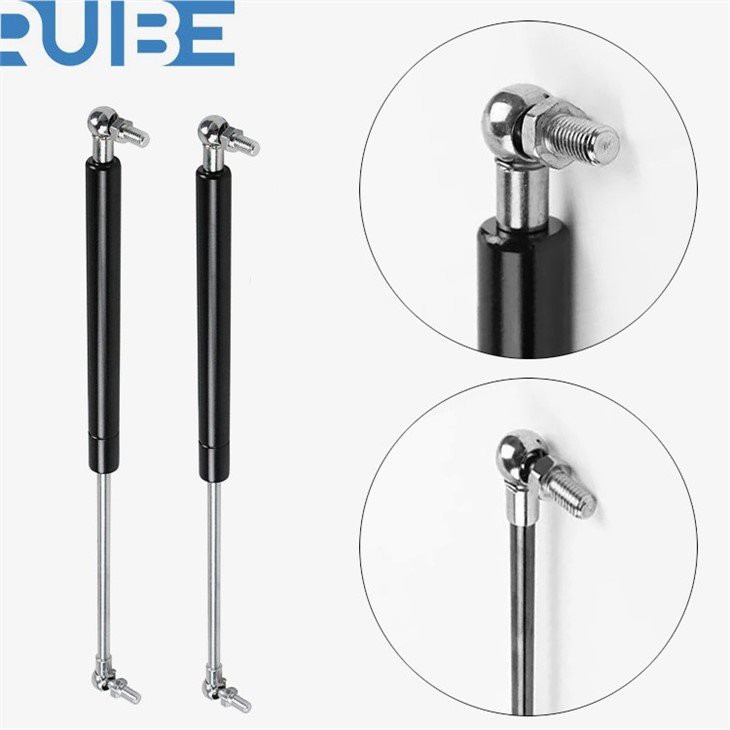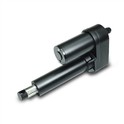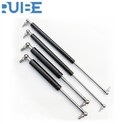Hey there! As a supplier of Bonnet Gas Springs, I've seen my fair share of these nifty devices go through their paces. Bonnet gas springs are super handy in a bunch of applications, like keeping car bonnets open, and they're designed to last. But like any mechanical thing, they'll eventually need to be replaced. So, let's chat about the signs that your Bonnet Gas Spring is ready for retirement.
1. Loss of Lift Force
One of the most obvious signs that a Bonnet Gas Spring is on its last legs is a loss of lift force. You know, when you pop open the bonnet and it just doesn't stay up like it used to. It might start to sag or even come crashing down. This is a big red flag.
Gas springs work by using compressed gas to create a force that helps lift and support the bonnet. Over time, the gas can leak out through small seals or due to wear and tear. When this happens, the pressure inside the spring drops, and so does the lift force. If you notice that you have to use extra muscle to open the bonnet or that it closes on its own, it's probably time to replace the gas spring.
2. Uneven Movement
Another giveaway is uneven movement. A properly functioning Bonnet Gas Spring should provide smooth and consistent lifting and lowering of the bonnet. If you feel any jerks, bumps, or hesitations when operating the bonnet, it could mean that the gas spring is having issues.
This uneven movement can be caused by a few things. It might be due to a damaged piston or rod inside the gas spring. Maybe there's some debris or dirt that's gotten into the mechanism, causing it to stick. Or, it could be a sign of internal corrosion. Whatever the cause, uneven movement is a sign that the gas spring isn't working as it should and needs to be replaced.
3. Noise
Noisy gas springs are never a good sign. If you hear any hissing, rattling, or squeaking sounds when you open or close the bonnet, it's a clear indication that something's wrong.
A hissing sound usually means that there's a gas leak. As the gas escapes from the spring, it creates that tell - tale hissing noise. Rattling or squeaking, on the other hand, could be due to loose components inside the gas spring or friction between moving parts. These noises not only indicate a problem with the gas spring but can also be really annoying. So, if your Bonnet Gas Spring is making a racket, it's time to swap it out.
4. Physical Damage
Take a close look at the gas spring for any signs of physical damage. This could include dents, scratches, or cracks on the cylinder or the rod. Physical damage can weaken the gas spring and affect its performance.
Dents and scratches can create weak points in the metal, making it more likely for the gas spring to fail. Cracks, especially on the cylinder, can lead to gas leaks and a complete loss of lift force. If you spot any visible damage on the Bonnet Gas Spring, it's best to replace it right away to avoid any safety issues.
5. Excessive Wear
Over time, the components of a Bonnet Gas Spring will naturally wear down. You might notice that the seals are starting to deteriorate, or the rod is showing signs of wear. Excessive wear can lead to gas leaks and a decrease in performance.
Seals are crucial for keeping the gas inside the spring. When they wear out, the gas can escape, and the lift force will be reduced. The rod, which moves in and out of the cylinder, can also wear down due to friction. If you see signs of excessive wear on these components, it's a sign that the gas spring is nearing the end of its lifespan.
Applications Beyond Bonnets
Bonnet Gas Springs aren't just for car bonnets. They have a wide range of applications in different industries. For example, Kitchen Cabinet Gas Spring are used to make it easier to open and close kitchen cabinets. These gas springs provide a smooth and controlled movement, making your kitchen more user - friendly.
Gas Spring for Storage Bed are another great application. They help you lift the heavy storage compartments of a bed with ease. This makes it much more convenient to access your stored items.
And let's not forget about Gas Spring for Tool Box. These gas springs ensure that your tool box lid stays open when you need it, so you can easily reach your tools without any hassle.


Why Replacement Matters
Replacing a worn - out Bonnet Gas Spring is important for several reasons. First of all, it's a safety issue. A failing gas spring can cause the bonnet to suddenly close, which can be dangerous, especially if you're working under it.
Secondly, it can improve the functionality of the bonnet or whatever application the gas spring is used in. A new gas spring will provide smooth, consistent movement and reliable lift force, making your life easier.
Finally, it can save you money in the long run. Ignoring a faulty gas spring can lead to further damage to the bonnet or other components, which can be more expensive to repair.
Conclusion
So, there you have it - the signs that a Bonnet Gas Spring needs to be replaced. Loss of lift force, uneven movement, noise, physical damage, and excessive wear are all clear indicators that it's time for a new gas spring.
If you're experiencing any of these issues with your Bonnet Gas Spring, don't hesitate to get in touch. We're here to help you find the right replacement gas spring for your needs. Whether it's for a car bonnet, a kitchen cabinet, a storage bed, or a tool box, we've got you covered. Contact us today to start the procurement process and get your equipment back in top - notch condition.
References
- Automotive Gas Spring Manuals
- Industry Reports on Gas Spring Durability
- Personal Experience as a Bonnet Gas Spring Supplier






